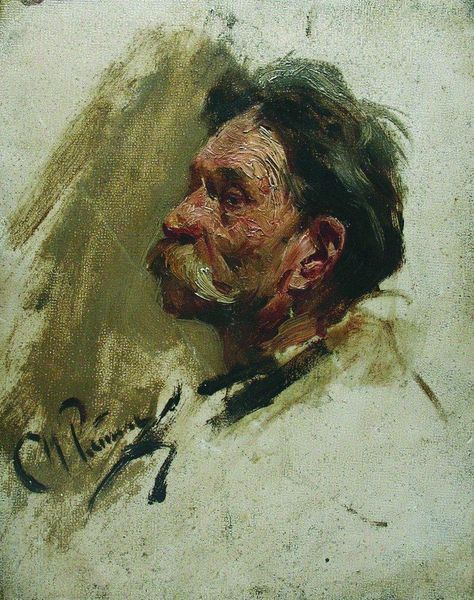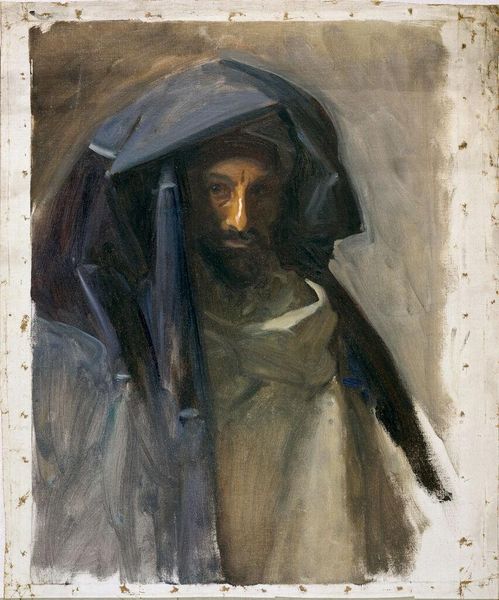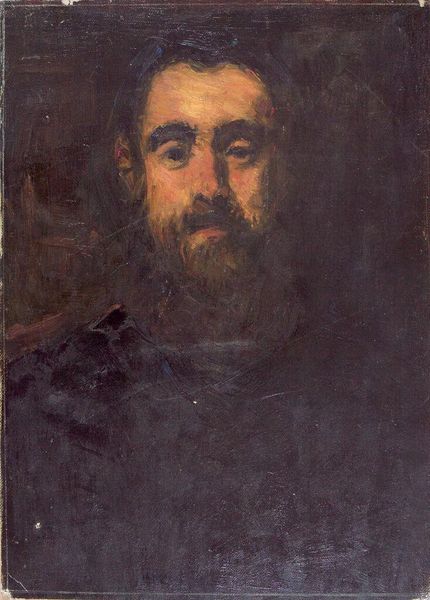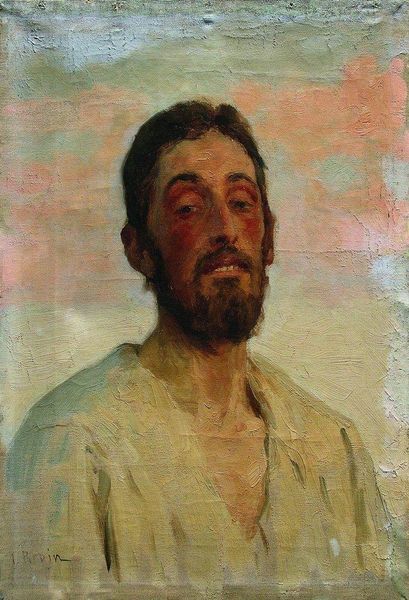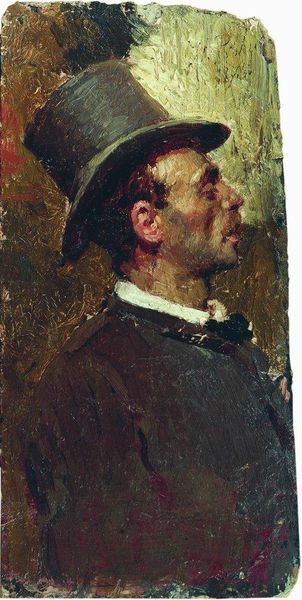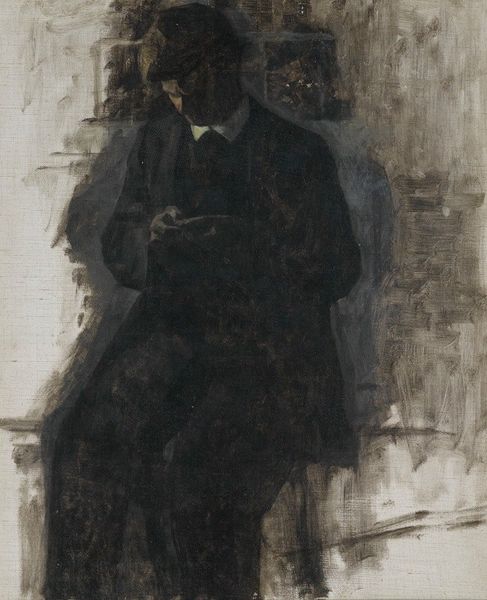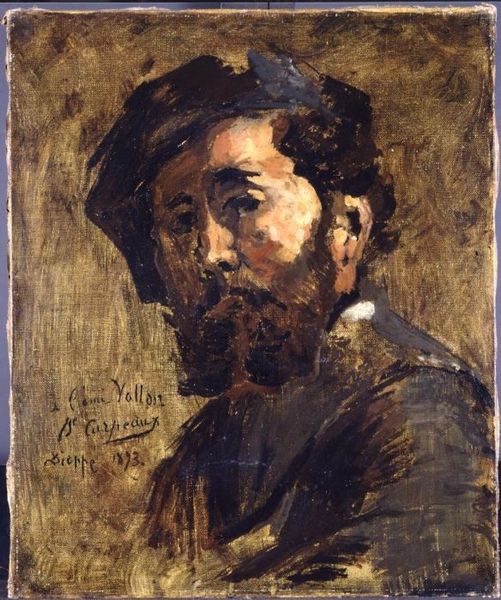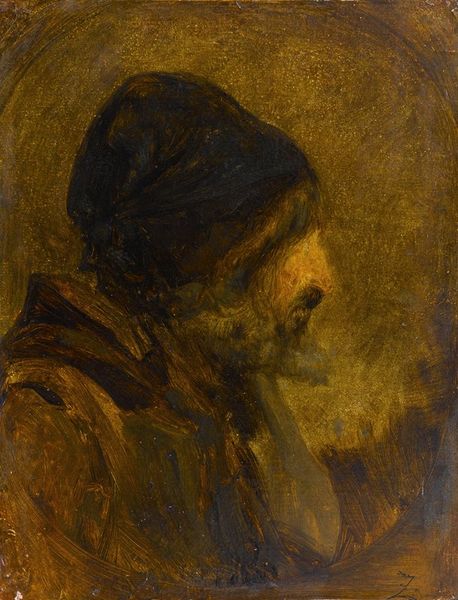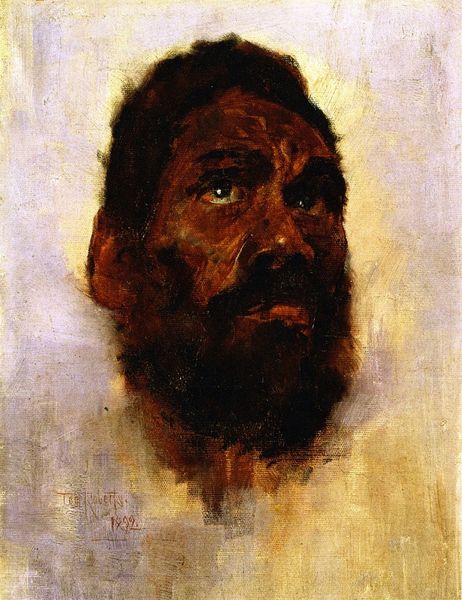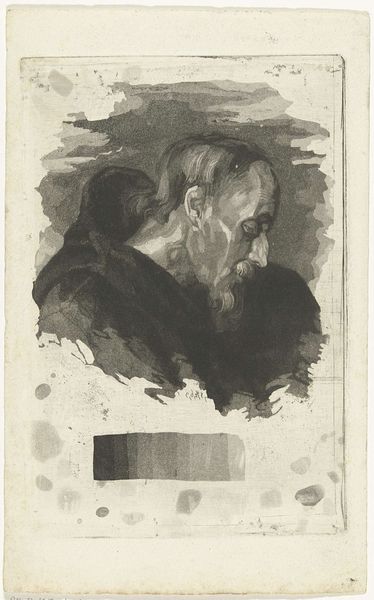
oil-paint, impasto
#
portrait
#
self-portrait
#
oil-paint
#
figuration
#
oil painting
#
impasto
#
underpainting
#
painting painterly
#
portrait art
#
modernism
#
fine art portrait
Copyright: Edwin Dickinson,Fair Use
Curator: Let's consider Edwin Dickinson's "Self Portrait" from 1954, an oil painting characterized by its impasto application and somewhat somber palette. Editor: My initial impression is of stark, unvarnished vulnerability. There's a rawness in the materiality, a sense of the artist exposing something essential about his own humanity. Curator: Dickinson's work often wrestled with temporality and memory, positioning the self as a fluid, rather than fixed, identity. Consider the sociopolitical climate of the mid-20th century—the anxieties surrounding the Cold War and evolving notions of masculinity—and how this portrait could be read as a response, a questioning of self. Editor: And that materiality, it's so central. The thick oil paint, the visible brushstrokes... this speaks volumes about the labor, the process. It avoids a polished, bourgeois aesthetic, and focuses instead on the unglamorous process of making, even the laborious process of self-examination. Curator: Absolutely. We see the artist not only as a subject but as a maker—actively constructing and deconstructing his identity through each stroke. The heavy underpainting, the almost brutal application of pigment, all speak to a period of intense self-reflection. Furthermore, let's acknowledge the implications of this "Self-Portrait" on the landscape of gender studies, specifically pertaining to representation, male identity, and portraiture. Editor: This refusal of surface polish, that’s key. Instead of appealing to an ideal, it insists on the real, the flawed. It invites a discomfort that prompts us to reconsider what we value in both art and ourselves, demanding a radical honesty. The artist gives the audience a real insight into their craft, presenting themselves for the world to see. It becomes a point of conversation for labor rights within artistic fields, too. Curator: I'm struck by the way the materiality serves to humanize, placing Dickinson within a wider history of self-representation that complicates established ideas regarding masculinity and the male gaze. Editor: It really drives home that tension between the artistic subject and process, Dickinson confronts his viewer with an almost physical manifestation of artistic effort and self-regard, in ways that offer valuable historical insight and social dialogue, if one cares to listen to his statements regarding materials, construction, and making. Curator: Indeed, thinking through Dickinson's use of his materials and his cultural milieu provides valuable insights into understanding mid-century art and social constructs. Editor: Examining both the subject matter and materiality leads to broader observations and understanding. Thank you.
Comments
No comments
Be the first to comment and join the conversation on the ultimate creative platform.
